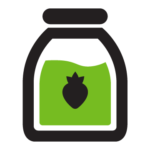Concrete
Starch products in cement increase strength and speed up set time. Corn syrup helps keep the surface even.
Corn refiners produce a variety of sweeteners in order to meet the demand of both consumers and food manufacturers. All corn sweeteners are natural and share important advantages–stability and crystallization control, for example. But, each type of sweetener provides different qualities to food makers, offering contrasting levels of sweetness, a range of caloric values, and other important properties. For example, corn sweeteners are able to:







As a result of their flexibility, corn sweeteners are used throughout the food industry to provide consumers with products that meet quality expectations.
With such a variety of useful properties, corn sweeteners also play important roles in consumer and industrial products. For example, different sweeteners increase the pliability of leather in the tanning process and prevent shoe polish from caking. Specialty corn sweeteners are used to bind industrial ingredients together and are utilized in the production of value-added specialty biochemicals, such as amino acids, sugar alcohols, organic acids, antibiotics, and enzymes.
The most common and widely known corn sweetener is high fructose corn syrup (HFCS). In terms of composition, high fructose corn syrup is nearly identical to table sugar (sucrose), which is composed of 50 percent fructose and 50 percent glucose. Fructose is a simple sugar commonly found in fruits and honey. Glucose is one of the simplest forms of sugar and serves as a building block for most carbohydrates.
Visit our FAQ for more information on High Fructose Corn Syrup.
Starch products in cement increase strength and speed up set time. Corn syrup helps keep the surface even.
In the tanning industry, liquid glucose is used to improve the flexibility of leather.
Microorganisms that create antibodies are often fed corn-based glucose in the lab. Corn is responsible for more than 85 antibiotics, including penicillin.
Maltodextrin keeps the seasonings on savory, baked snack products evenly distributed and securely in place, while helping reduce fat content.
High fructose corn syrup has a lower freezing point, so concentrated juices are ready to pour and mix straight from the freezer.